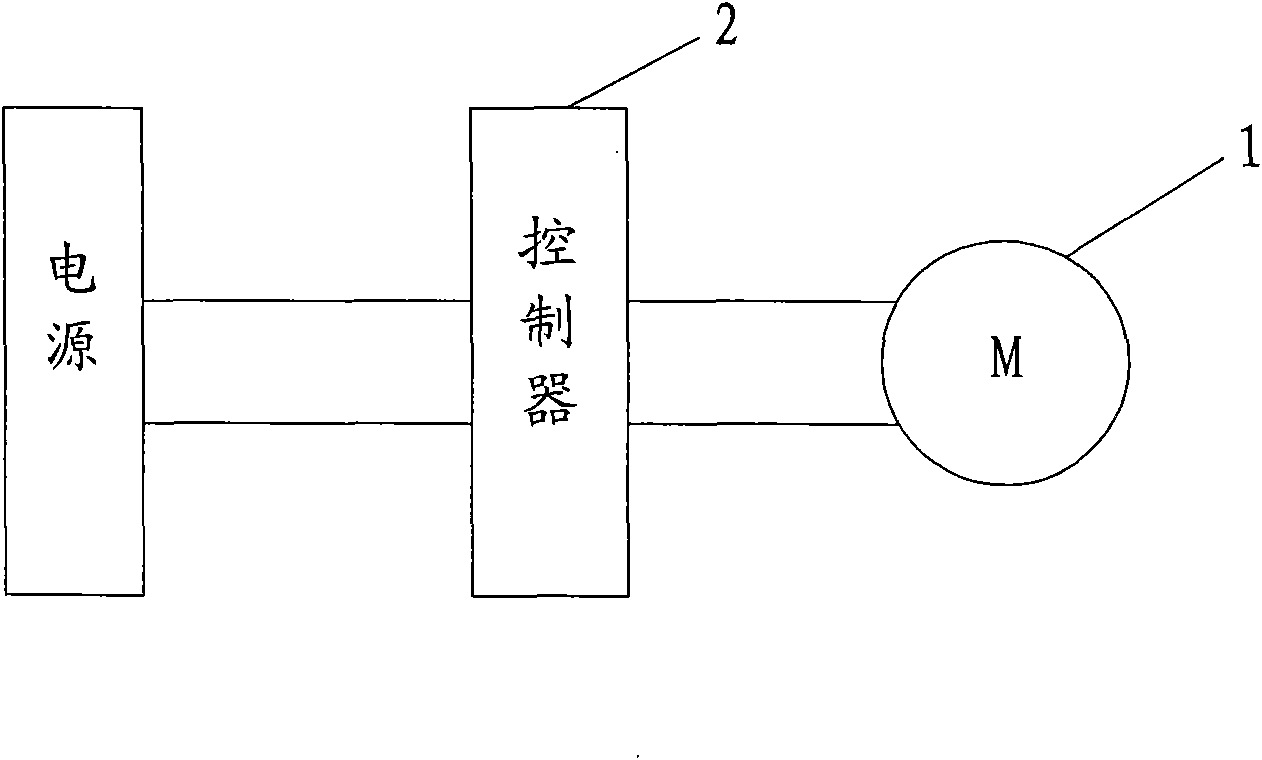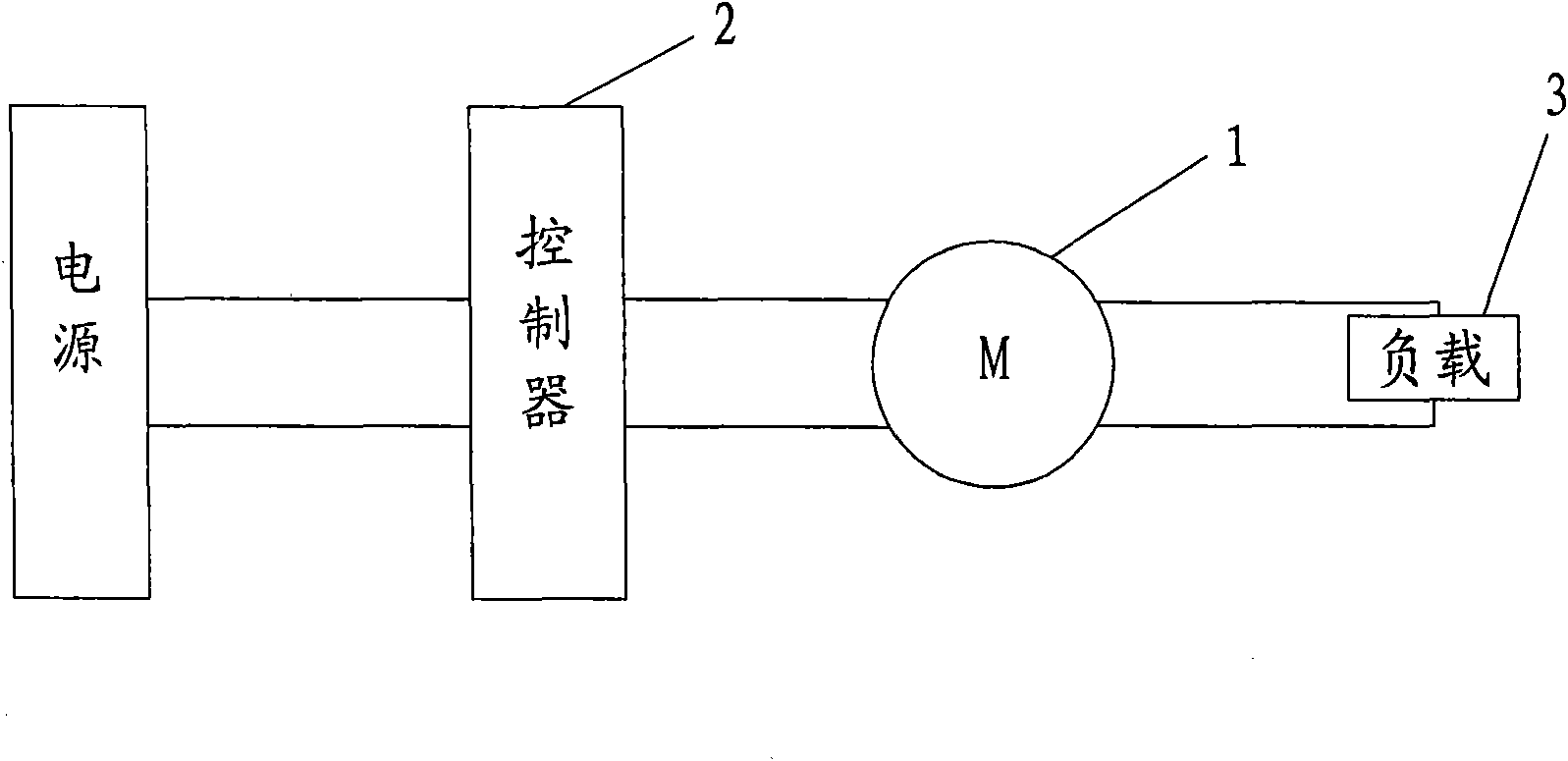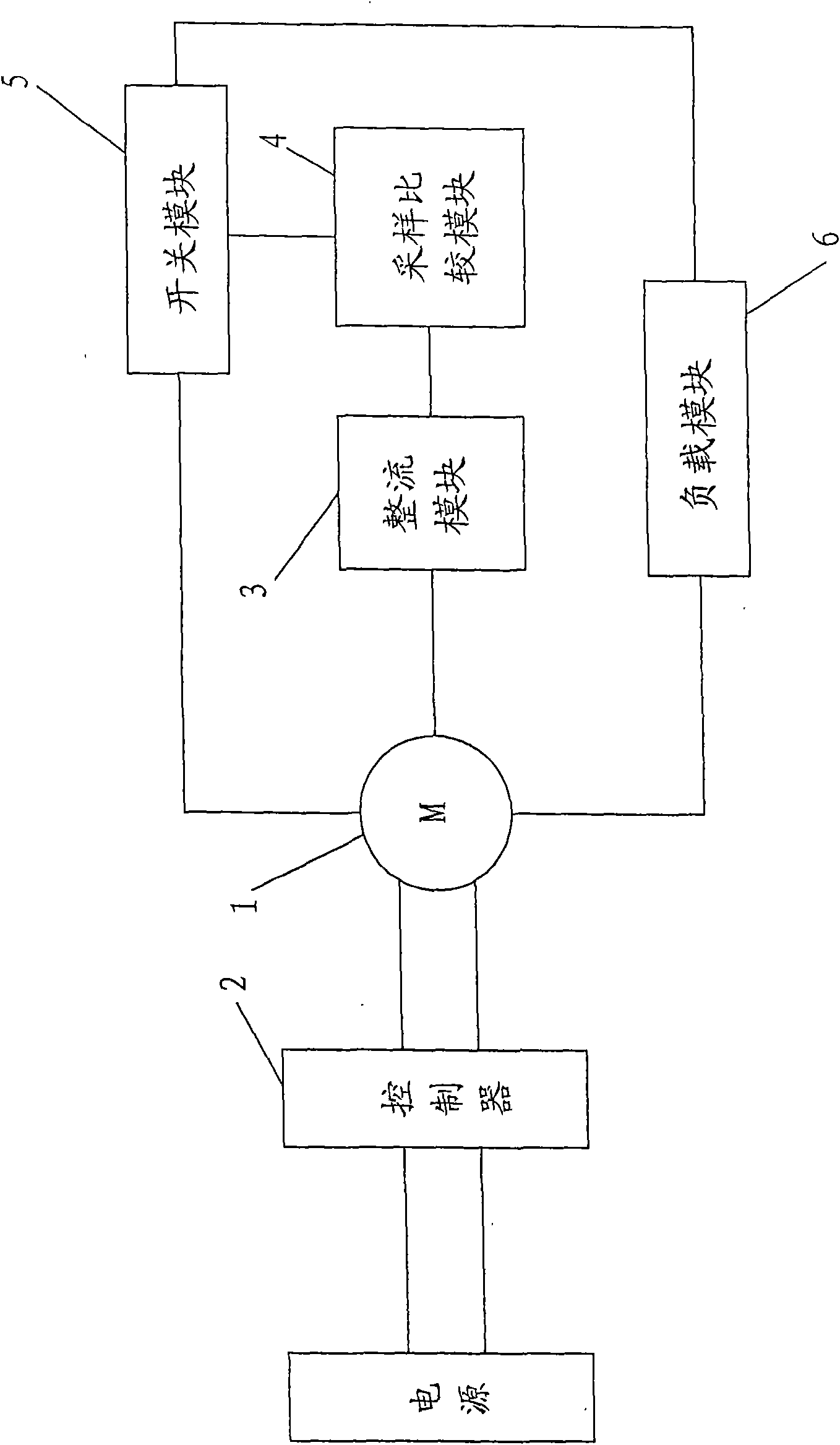Device and method for controlling DC motor to lower roller shutter door at constant speed
A technology of DC motors and control devices, applied in the direction of DC motor speed/torque control, door/window protection devices, control systems, etc. Working at high pressure and high temperature for a long time, reducing production costs and prolonging the service life
- Summary
- Abstract
- Description
- Claims
- Application Information
AI Technical Summary
Problems solved by technology
Method used
Image
Examples
Embodiment Construction
[0023] The present invention will be described in detail below in conjunction with specific embodiments.
[0024] image 3 Shown is a preferred embodiment of the present invention, including a rectification module 3 , a sampling module 4 , a comparison module 7 , a switch module 5 and a load module 6 .
[0025] The rectifier module 3 is connected in parallel to the two ends of the DC motor 1, and rectifies the voltage signal at both ends of the DC motor 1. In this embodiment, a bridge rectifier circuit is selected, such as Figure 5 As shown, the bridge rectifier circuit is formed by two-to-two connection of four diodes. This is a known technology, so it will not be described again.
[0026] The output end of the rectification module 3 is connected to the sampling end of the sampling module 4 , and the sampling module 4 samples the rectified voltage value and transmits the voltage value to the connected comparison module 7 .
[0027] The output end of the sampling module 4 i...
PUM
 Login to View More
Login to View More Abstract
Description
Claims
Application Information
 Login to View More
Login to View More - R&D
- Intellectual Property
- Life Sciences
- Materials
- Tech Scout
- Unparalleled Data Quality
- Higher Quality Content
- 60% Fewer Hallucinations
Browse by: Latest US Patents, China's latest patents, Technical Efficacy Thesaurus, Application Domain, Technology Topic, Popular Technical Reports.
© 2025 PatSnap. All rights reserved.Legal|Privacy policy|Modern Slavery Act Transparency Statement|Sitemap|About US| Contact US: help@patsnap.com



